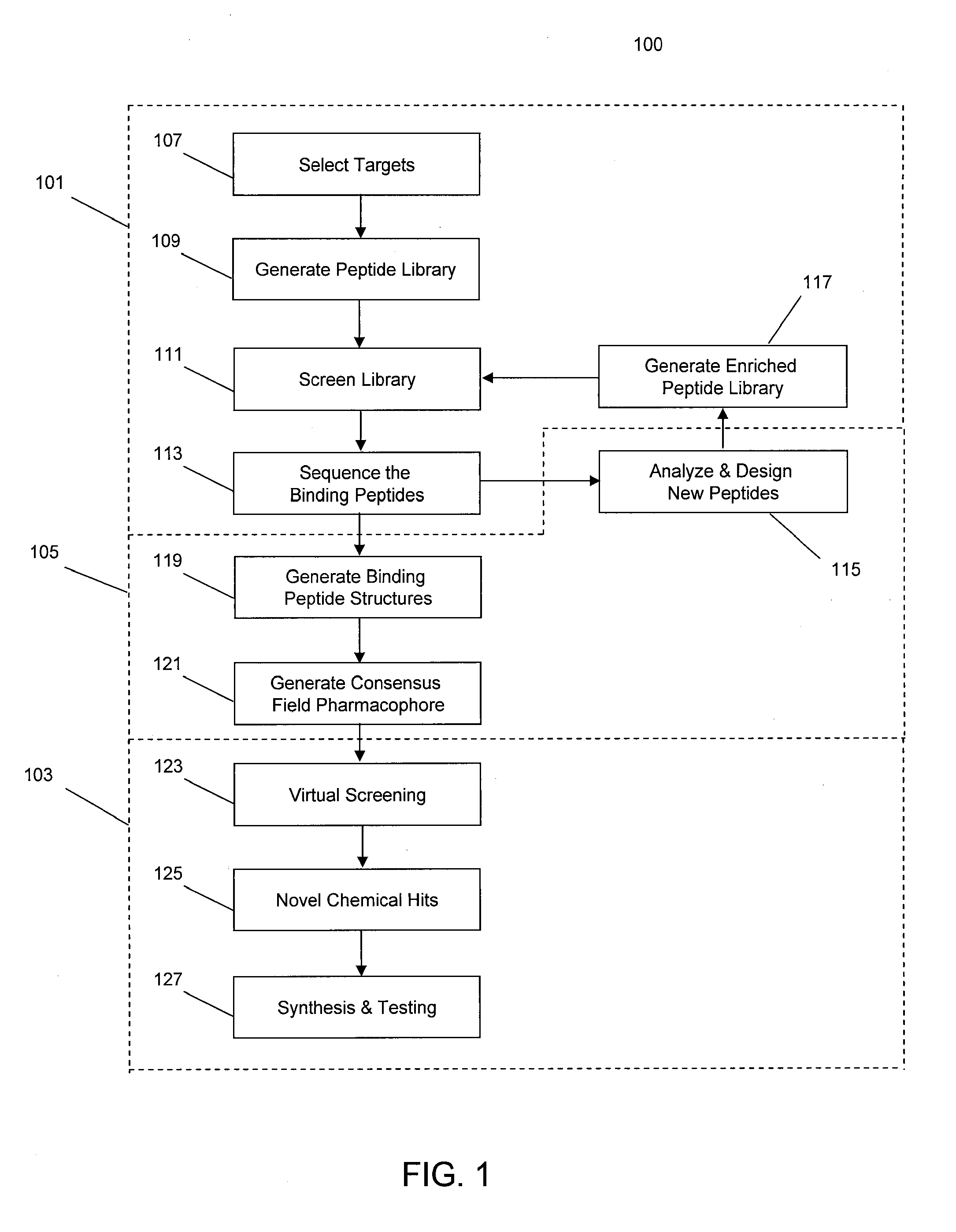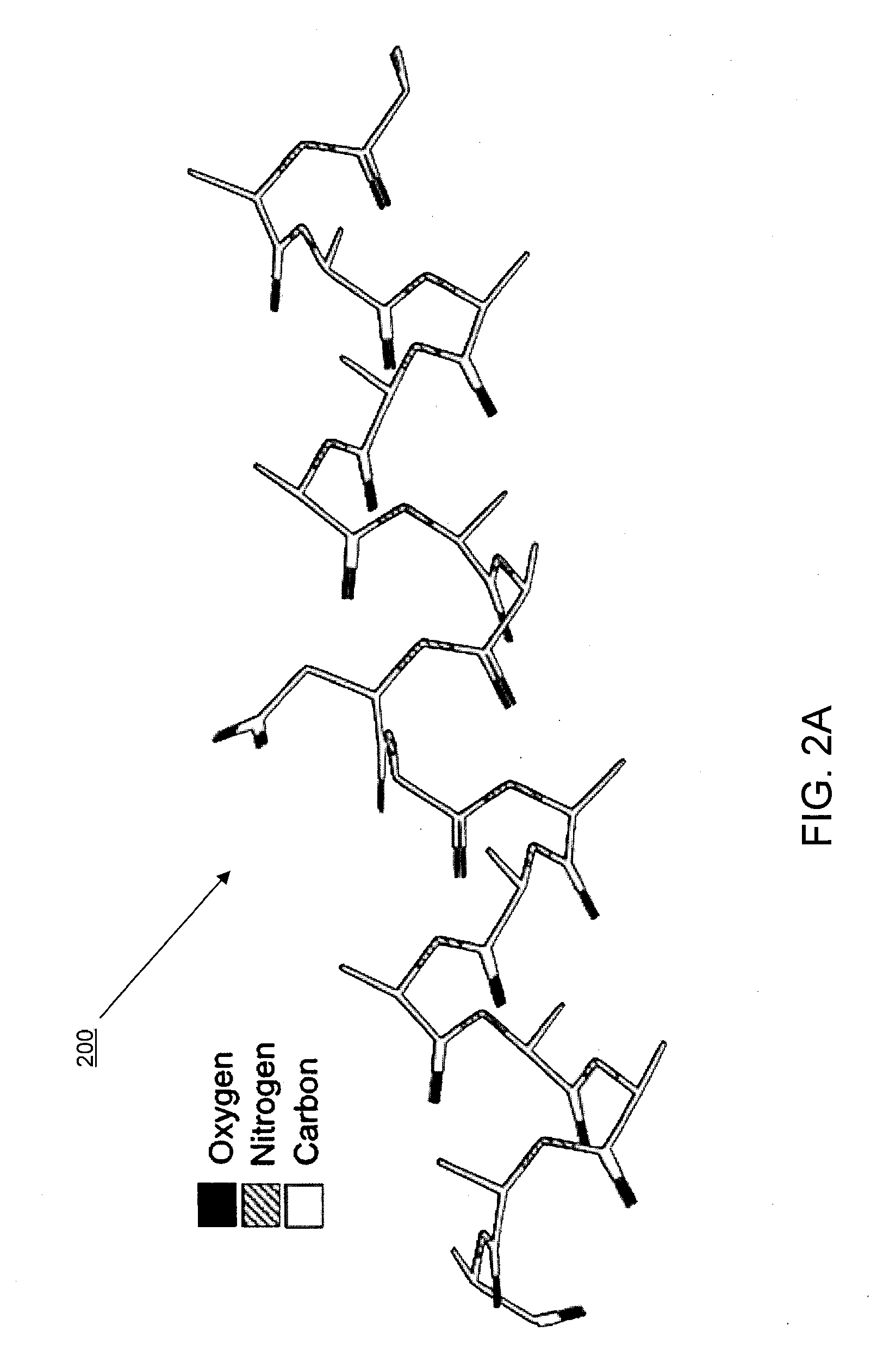Methods and systems for optimization of peptide screening
a technology of peptide screening and optimization methods, applied in the field of system and method for optimizing peptide screening, can solve the problems of increasing the cost of bringing novel pharmaceuticals to the market, increasing the risk, increasing the uncertainty of drug development,
- Summary
- Abstract
- Description
- Claims
- Application Information
AI Technical Summary
Benefits of technology
Problems solved by technology
Method used
Image
Examples
Embodiment Construction
[0035]In some implementations, the systems and methods described herein provide improved tools for analyzing and optimizing peptides in the drug discovery process. In some prior systems and methods, the similarity of two peptides is scored using an amino acid substitution matrix, which may be derived in a number of ways (e.g. using evolutionary sequence, physiochemical property, or even grid-based surface similarity). However, in these methods, the types of amino acids are typically considered as indivisible entities, i.e. an average value is given for the propensity of one amino acid to substitute for another in all situations. This is a gross simplification that produces inaccurate results when dealing with the detailed contexts of specific peptide binding interactions. It is known that different amino acids have different propensities to substitute for each other in different protein contexts. Some methods do exist for considering the gross environment (e.g., polar vs. non-polar)...
PUM
| Property | Measurement | Unit |
|---|---|---|
| torsion angles | aaaaa | aaaaa |
| phi angle | aaaaa | aaaaa |
| phi angle | aaaaa | aaaaa |
Abstract
Description
Claims
Application Information
 Login to View More
Login to View More - Generate Ideas
- Intellectual Property
- Life Sciences
- Materials
- Tech Scout
- Unparalleled Data Quality
- Higher Quality Content
- 60% Fewer Hallucinations
Browse by: Latest US Patents, China's latest patents, Technical Efficacy Thesaurus, Application Domain, Technology Topic, Popular Technical Reports.
© 2025 PatSnap. All rights reserved.Legal|Privacy policy|Modern Slavery Act Transparency Statement|Sitemap|About US| Contact US: help@patsnap.com



